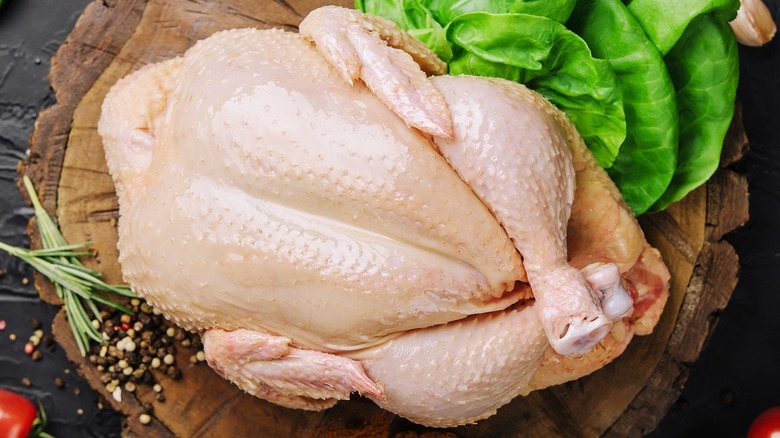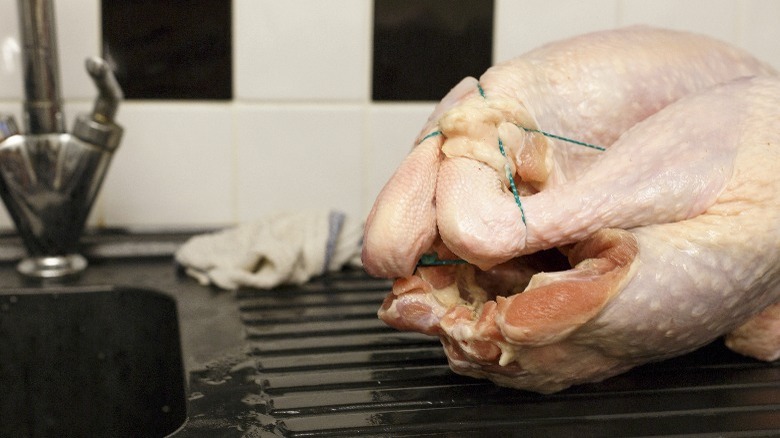What's The Best Way To Thaw A Frozen Turkey?
We may receive a commission on purchases made from links.
Thanksgiving turkeys have doubled in size since the 1920s. While a bird that size allows ambitious home chefs to impress 20 or more of their closest friends and relatives with their go-to basic roasted turkey recipe, larger birds also make turkey prep all the more time-consuming — particularly the thawing part. Given the need to start thawing the bird several days before any other preparations, such as brining or cooking, the turkey alone can easily occupy the entire week leading up to Thanksgiving.
Chef Ian Coogan, the culinary director at Motel Morris in New York City, tells Chowhound the turkey thawing process must begin a few days ahead. It starts with relieving the bird of its packaging and putting it in a plastic container or on a sheet tray. Amazon sells 5-gallon brining bags you can use to keep everything else in the fridge salmonella-free. As an added bonus, the turkey can go straight into a bucket for brining, even if it's not food-grade.
From there, the turkey goes into the fridge for 24 hours per 4 to 5 pounds of weight. Cold-thawing the bird is nonnegotiable. It allows the turkey to thaw at a safe, regulated temperature that reduces the speed of bacteria growth. That means a 15- or 16-pound bird stays in the fridge for around four or five days before it's ready for the next stage of prepping. Err on the side of caution; it's safe to leave it in the fridge for an extra day or two after it thaws.
Speeding up the process
Eventually, we all have that forgot-to-take-the-turkey-out-to-thaw moment. Coogan has some advice for that too: "If you're in a time crunch, you can leave the turkey in its original packaging and soak it submerged in cold running water for a few hours."
Again, the water must be cold because that allows it to thaw at a comfortable, safe temperature. Turkeys that thaw too fast can enter the danger zone — that is, 40 degrees Fahrenheit or higher. At that point, the turkey becomes a nesting ground for bacteria, which can cause foodborne illnesses. And some of that bacteria, such as Staphylococcus aureus, is heat-resistant, which means your bird could exit the oven with bugs of the vomit-inducing kind if you're not careful. And that's a real possibility, given that most foodborne illnesses on Thanksgiving come from turkey.
In any case, you need at least eight hours of thawing time to bring a 15- to 16-pound bird out of the Arctic, so to speak. Change the water every half hour so it remains cold enough to be safe. Once it thaws, cook it within four days (not that you have that kind of time if you're using this method). Of course, you can skip it all by opting for a cook-from-frozen turkey. That cuts the whole process down to just four or five hours. It's something to think about if you're facing a wake-up call of zero dark thirty to prep a turkey for the holiday.

